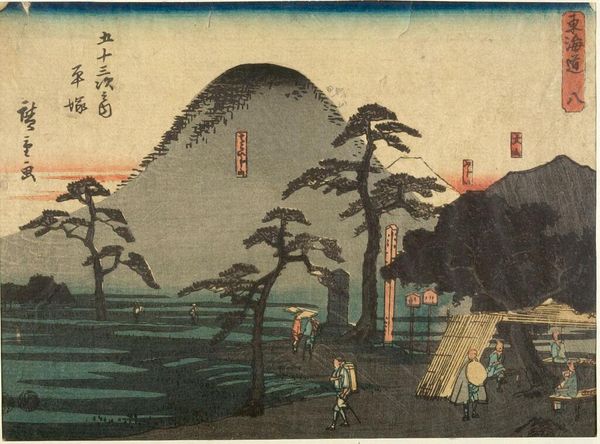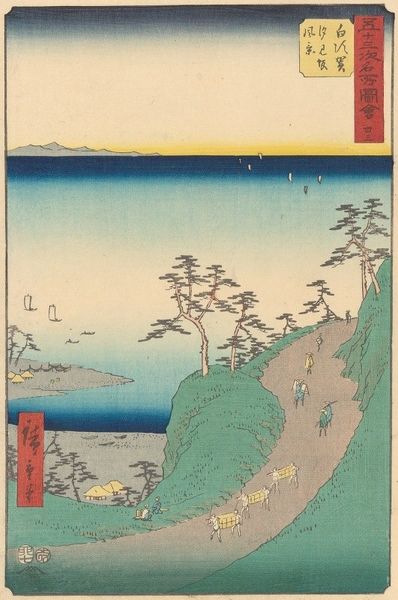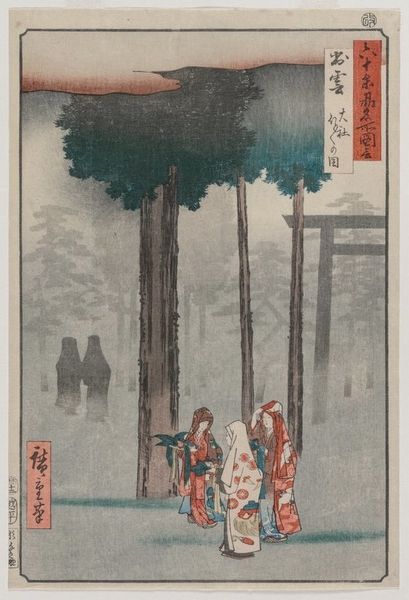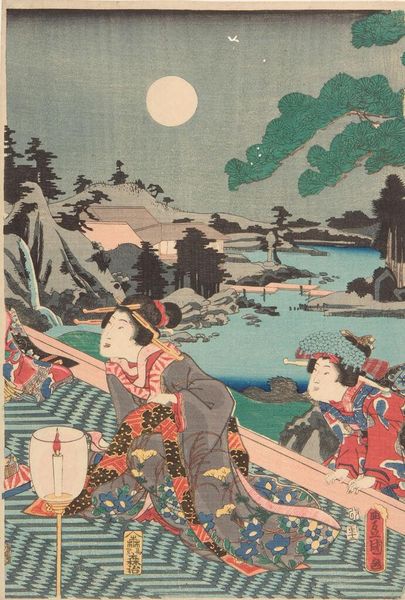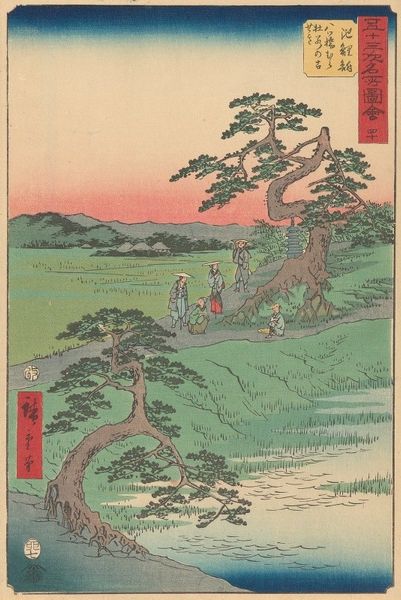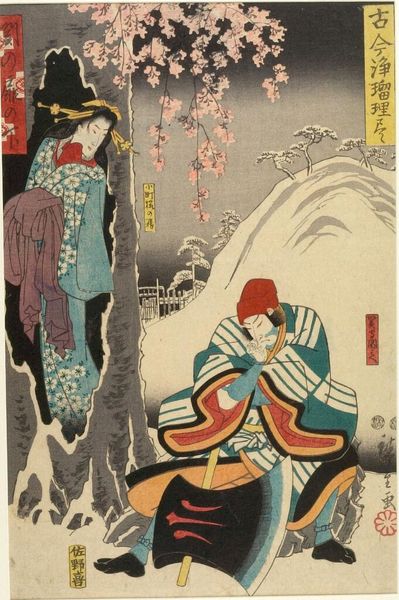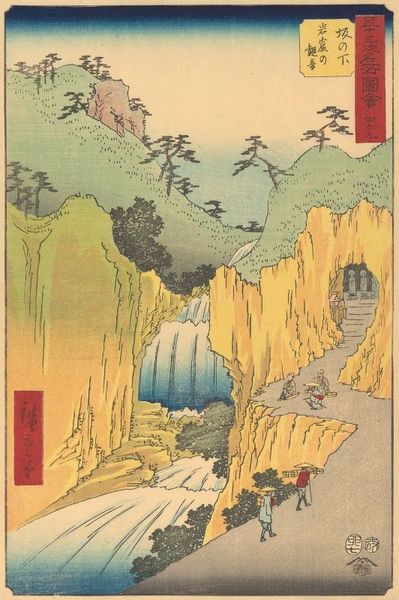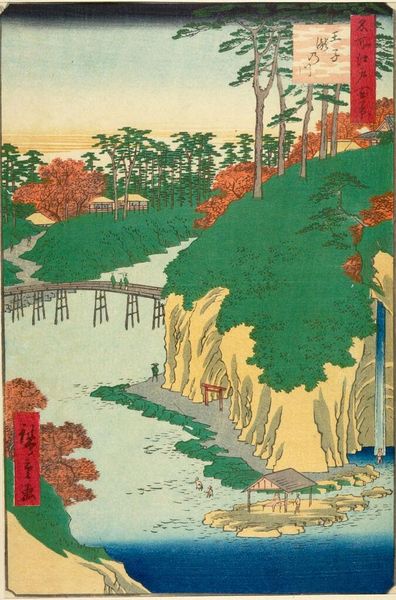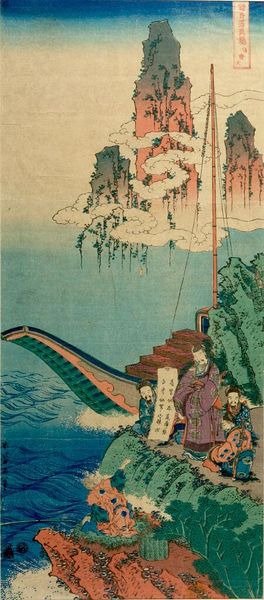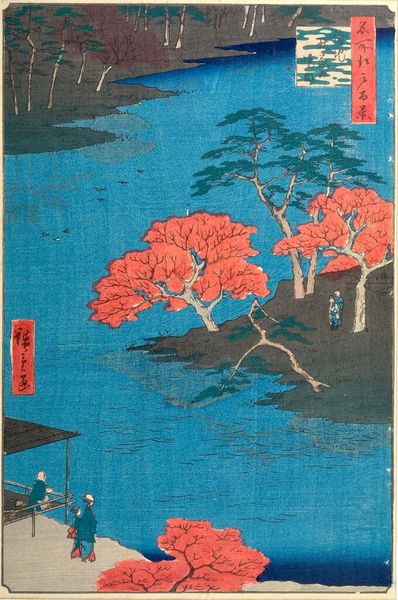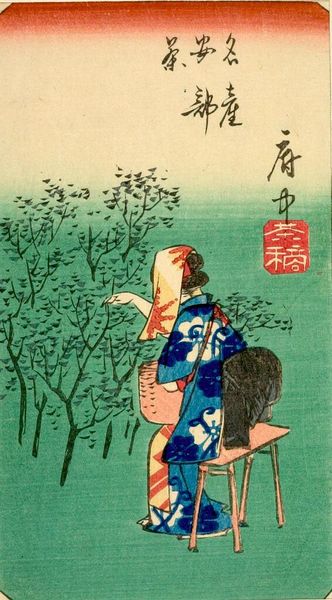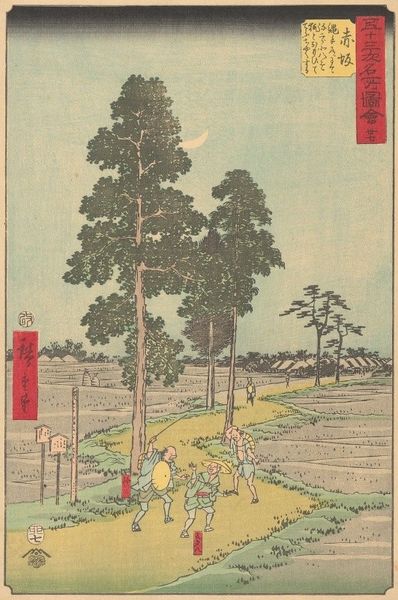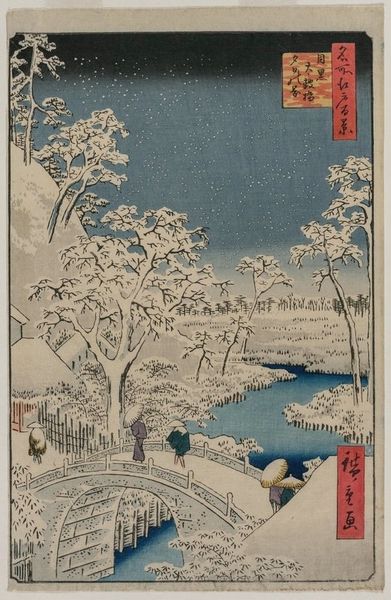
Li Bai (Ri Haku), from the series A True Mirror of Chinese and Japanese Poetry (Shika shashin kyÅ) c. 1833
0:00
0:00
Copyright: CC0 1.0
Curator: This is Katsushika Hokusai's print, "Li Bai," from the series "A True Mirror of Chinese and Japanese Poetry," now residing at the Harvard Art Museums. What are your first thoughts? Editor: It feels like a daydream. That waterfall's song must be intoxicating, lulling you into another world. Curator: The figure depicted is Li Bai, or Ri Haku as he was known in Japan, a celebrated Tang Dynasty poet often associated with Daoist ideals of nature and transcendence. Editor: So, Hokusai places this literary giant in a setting that mirrors his poetry’s themes—a dialogue between humanity and the sublime. Curator: Precisely. Hokusai uses the imagery to explore the intersection of cultural identity and artistic inspiration. How might Li Bai’s own work inform our reading of this image? Editor: It is interesting how he looks so small against nature; the immensity of the waterfall contrasting the figure. Curator: That contrast encapsulates the relationship between the individual and the infinite, nature acting as both muse and mirror. Editor: It makes me think about how art allows us to explore these conversations across time. Curator: It certainly offers a new lens through which to view both poetry and the power of nature.
Comments
No comments
Be the first to comment and join the conversation on the ultimate creative platform.
